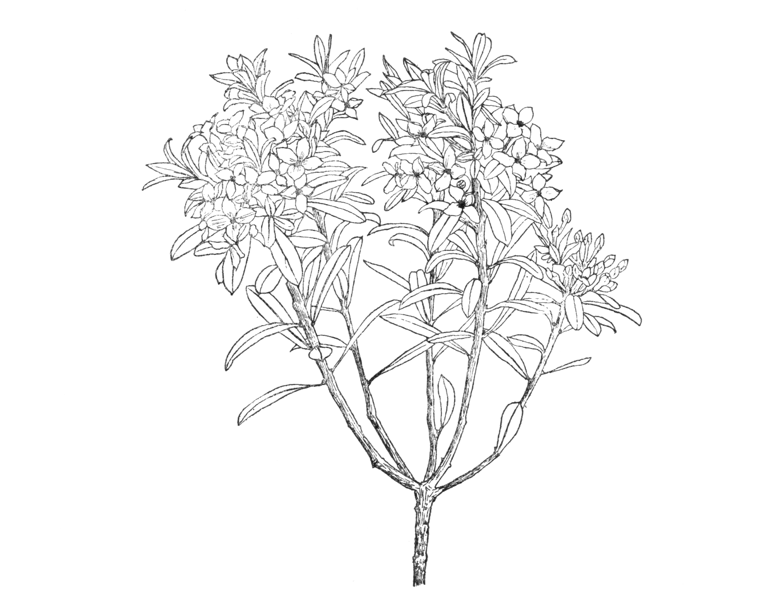A dense, erect-branched shrub 2 to 3 ft high, of bushy habit, and evergreen; shoots dark brown, with minute forward-pointing hairs. Leaves short-stalked, scattered along the branches, oblanceolate or narrowly obovate, rounded or obtusely angled at the apex, 3⁄4 to 11⁄4 in. long, 1⁄8 to 1⁄3 in. wide; dark glossy green and glabrous above, glaucous and more or less hairy towards the base beneath. Flowers in one or more leafy clusters at the apex of the branches, from ten to fourteen flowers in a cluster, opening successively from March to May, and even later; at first they are rosy purple, but turn pale with age, sweetly scented, 1⁄3 in. long and wide, covered outside with minute whitish down. Fruit not seen.
This daphne, which is one of the most robust and easiest to cultivate of a difficult class of plants, would appear to be a hybrid of natural origin. Lindley, who gave an excellent figure of it in Bot. Reg., t. 822, called it D. collina neapolitana. The general opinion now held is that it is a hybrid; its parentage is usually given as collina × cneorum, but I should rather judge it to be oleoides × cneorum. It is grown in gardens under a variety of names, often as D. oleoides. One of the most useful of daphnes, and fond of lime in the soil.
The status of this daphne remains as controversial at the present time (1971) as when the above words were written. Lindley’s view, that it was no more than a variant of D. collina, was strongly upheld by Keissler in his monograph (Bot. Jahrb., Vol. 25, p. 97) and in this he is followed by Rehder. However, the indumentum of the perianth suggests the influence of D. cneorum; the other parent is more likely to have been D. collina than D. oleoides.
The identity of the daphnes once grown under such names as D. elisae, D. delahayana and D. fioniana is not certain; they are said to resemble D. × neapolitana and may be of the same parentage.


